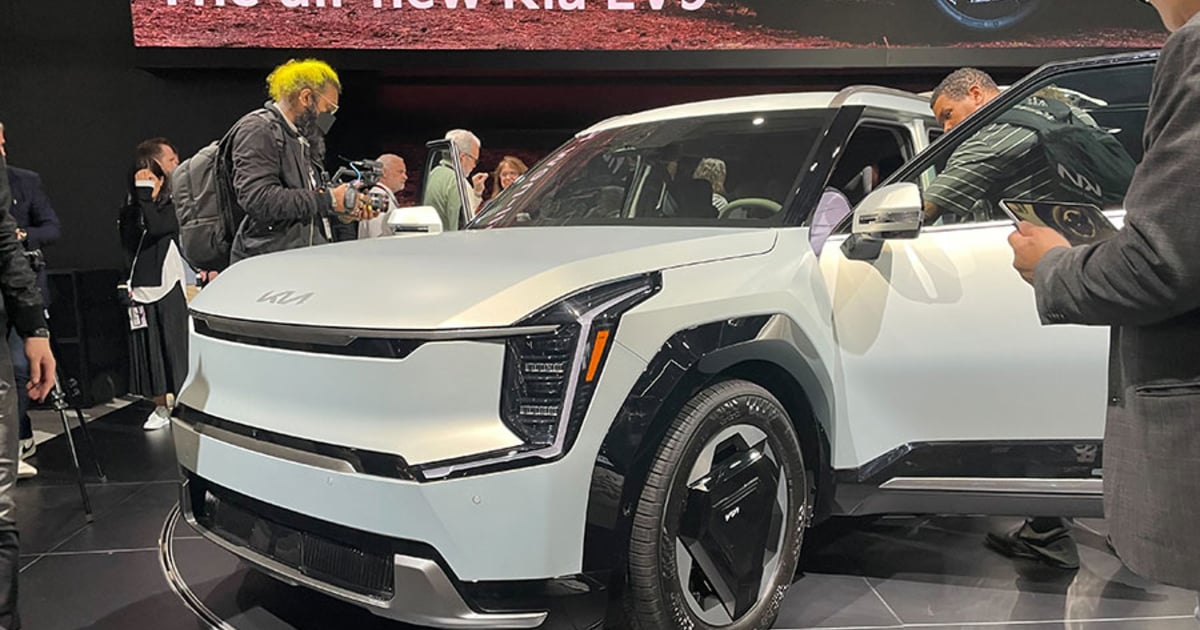
Editor’s note: This story has been updated to reflect that all states follow the U.S. Clean Air Act.
Three in four vehicles in the U.S. could be electric by 2050 if certain states enact California’s ban on gasoline vehicle sales by 2035.
If the 17 states that follow the California Air Resources Board’s limits on pollution also adopt California’s Advanced Clean Cars II rule, which requires all vehicles sold to be zero-emission by 2035, more than 239 million vehicles on U.S. roads could be electric by 2050. That’s from a report published Monday by Energy Innovation, an energy and climate policy think tank.
Those states make up nearly 40 percent of vehicle registrations today, according to CARB. If each state goes all-EV by 2035, the shift “could really dramatically reshape the U.S. car market,” Robbie Orvis, Energy Innovation’s senior director of modeling and analysis, told Automotive News.
Without the Advanced Clean Cars II rule, 189 million U.S. registrations would be EVs by 2050, the group found. If only California followed the rule, 207 million EVs would be on the road by 2050.
According to Experian, 2.2 million EVs were in operation in the U.S. last year. J.D. Power said that battery-electric vehicles made up about 8 percent of U.S. light-vehicle sales in the first quarter, compared with 5.2 percent a year earlier. Plug-in hybrids made up another 2 percent of sales.
The Advanced Clean Cars II rule requires automakers increase EV share in a given state over time, reaching 35 percent zero-emission vehicle sales for the 2026 model year and 100 percent by 2035.
Each state has a range of considerations for adopting the rule, including adequate charging infrastructure and cost, Orvis said, so it’s difficult to predict how many will apply the rule.
States can fully adopt California’s rule, or they can shorten their timeline, according to RMI, a clean energy nonprofit. Colorado, for example, is partially adopting the sales targets. The state plans to reach 82 percent zero-emission vehicle sales through 2032 but has not committed to 100 percent by 2035.
U.S. emissions could decrease by 1,310 million metric tons of carbon dioxide-equivalent pollutants by 2050 if all 17 states follow the rule, Energy Innovation said. That’s the same as eliminating emissions from more than 282 million gasoline-powered vehicles driving for one year and cumulatively from 13 coal plants operating through 2050.
So far, nine of the 17 states that follow CARB’s limits on pollution have committed to Advanced Clean Cars II: California, Maryland, Massachusetts, New Jersey, New York, Oregon, Vermont, Virginia and Washington. Others, such as Delaware and Rhode Island, have made statements about plans to adopt the rule but have not begun a formal legislative process, said Dan O’Brien, modeling analyst for Energy Innovation.
Drew Veysey, a senior associate at RMI, expects all 17 of the states that follow CARB’s limits on pollution to adopt at least part of the rule.
“It is a very premiere climate policy, so [for] any state that is serious about reducing greenhouse gas emissions, their agencies will be considering adopting it,” he said.
RMI analyzed the effect of the rule in Colorado, Michigan and North Carolina. Applying Advanced Clean Cars II would drive EVs to 25 percent of the market in each state by 2032, RMI said in a post last week. It estimates that EVs will reach price parity with gasoline vehicles by then.
States that don’t adopt the full rule could consider a partial adoption, as Colorado has, Veysey said.
“They can realize many of the benefits if they just adopt it through 2032,” he said. “The more states adopt, the more benefits there are nationally.”
Although Michigan and North Carolina do not follow CARB’s limits on pollution, they have targets for reducing greenhouse gas emissions that could incentivize them to adopt Advanced Clean Cars II, Veysey said.
If EVs are adopted more quickly, the industry will learn lessons sooner and develop strategies for decreasing EV costs, which could eventually reduce EV prices in other states, Orvis said. Advanced Clean Cars II builds on the momentum of EV adoption under the Inflation Reduction Act and helps ensure it continues to accelerate after the tax credits expire in 2032.
“It’s really an opportunity to kind of catalyze the U.S. battery and EV manufacturing industry,” he said.
Veysey said that as new EV sales increase, EVs will become more widely available in the used-car market, where most consumers shop, reducing emissions even more broadly.
“There really is no time to waste,” he said.